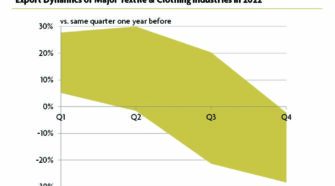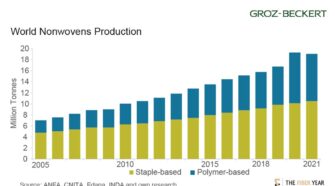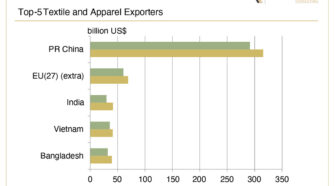
TFY 2023 – Three-Year Loss of 19 Million Tonnes of Fibers
The Fiber Year 2023 is nearing completion and is ready for publication as of this summer. Some final confirmations for manmade fiber manufacturing are still pending but the former appraisal …

TFY 2023 – From Optimism to Recession in 2022
Work for The Fiber Year 2023 still is in full swing but recognizable is a similar development to 2020 with natural fiber supply expanding and manmade fibers output shrinking. Declaring …

Historic Decline in World Staple Fibers
Global supply of staple fibers in 2021 accounted for 58 million tonnes which meant for the first time in history losing their majority share in primary spinning stage. This decline …

2022 Dampened by Economic Challenges
The Fabric Year 2022 is a unique service as the result of joining forces between Groz-Beckert and The Fiber Year to combine the upstream spinning industry with fabric making stage …

Textile and Apparel Trade
The Fiber Year in its 22nd edition compiled textile and clothing trade data for more than 60 countries with double-digit expansions in both export and import value. Asian industries lifted …

